Introduction
This document describes how packet captures, other tools, help with control-plane issues when site-to-site VPN on Cisco IOS® XE routers is negotiated.
Prerequisites
Requirements
Cisco recommends that you have knowledge of these topics:
- Basic knowledge of Cisco IOS® CLI configuration.
- Fundamental knowledge of IKEv2 and IPsec.
Components Used
The information in this document is based on these software versions:
- CSR1000V - Cisco IOS XE Software running version 16.12.0.
The information in this document was created from the devices in a specific lab environment. All of the devices used in this document started with a cleared (default) configuration. If your network is live, ensure that you understand the potential impact of any command.
Background Information
Packet captures are a powerful tool to help you verify whether packets are being sent/received between VPN peer devices. They also confirm if the behavior seen with IPsec debugs aligns to the output collected on the captures since the debugs are a logical interpretation, and the capture represents the physical interaction between the peers. Because of that, you could confirm or discard connectivity issues.
Useful Tools
There are useful tools that help you configure the captures, extract the output, and analyze it further. Some of them are:
- Wireshark: This is a well-known and used open-source packet analyzer.
- Monitor captures: Cisco IOS XE feature on routers that help you collect captures and provide you a light output of what the traffic flow looks like, protocol collected, and its timestamps.
How to Configure Captures on IOS XE Router

A capture uses an extended access-list (ACL) that defines the type of traffic to be collected, and the source, and destination addresses of the VPN peers or segments of the interesting traffic. A tunnel negotiation uses the UDP port 500 and port 4500 if NAT-T is enabled along the path. Once the negotiation completes and the tunnel is established, the interesting traffic uses IP protocol 50 (ESP) or UDP 4500 if NAT-T is enabled.
In order to troubleshoot control-plane related issues, VPN peers IP addresses must be used to capture how the tunnel is negotiated.
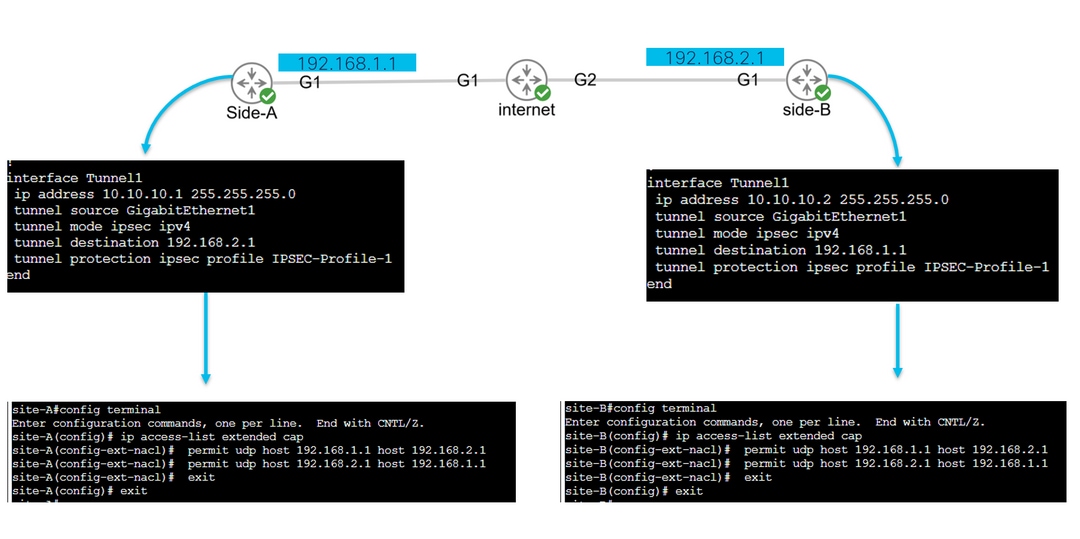
config terminal
ip access-list extended <ACL name>
permit udp host <local address> host <peer address>
permit udp host <peer address> host <source address>
exit
exit
The configured ACL is used to narrow the captured traffic, and it is placed on the interface used to negotiate the tunnel.

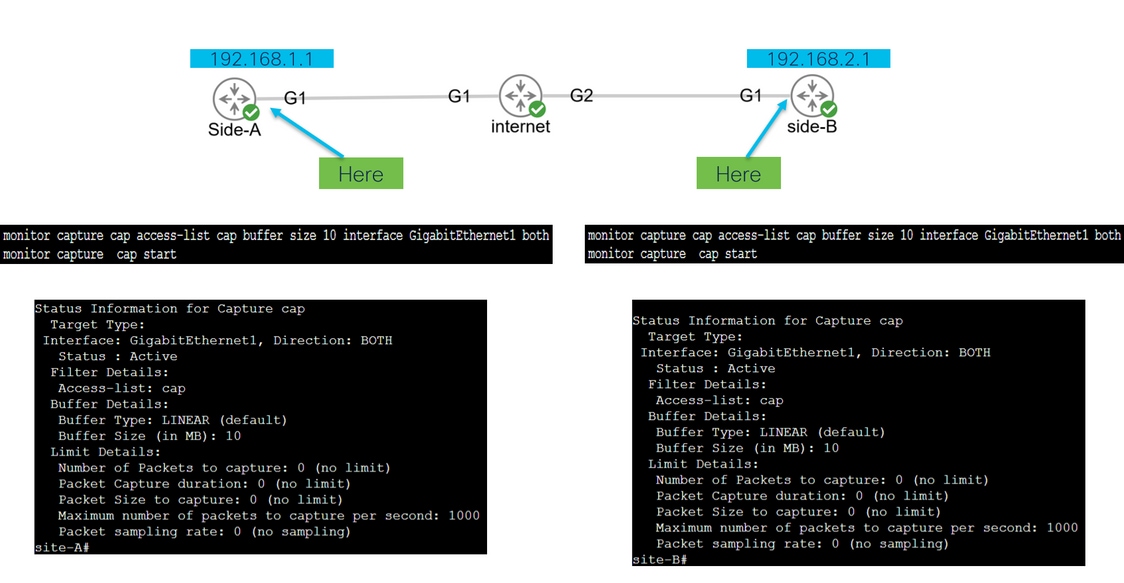
monitor capture <capture name> access-list <ACL name> buffer size <custom buffer size in MB> interface <source interface of teh router> both
Once the capture is configured, it can be manipulated to stop it, clear it, or extract the traffic collected with the next commands:
- Check the general capture info: show monitor capture
- Start/stop the capture: monitor capture cap start/stop
- Verify the capture is collecting packets: show monitor capture cap buffer
- See a brief output of the traffic: show monitor capture cap buffer brief
- Clear the capture: monitor capture cap clear
- Extract the capture output:
- monitor cap cap buff dump
- monitor capture cap export bootflash:capture.pcap
Analyze the Tunnel Establishment with Packet Captures
As mentioned earlier, to negotiate the IPSec tunnel, packets are sent over UDP with port 500 and port 4500 if NAT-T is enabled. With captures, more information can be seen from those packets such as the phase that is being negotiated (phase 1 or phase 2), the role of each device (initiator or responder), or the SPI values that were just created.
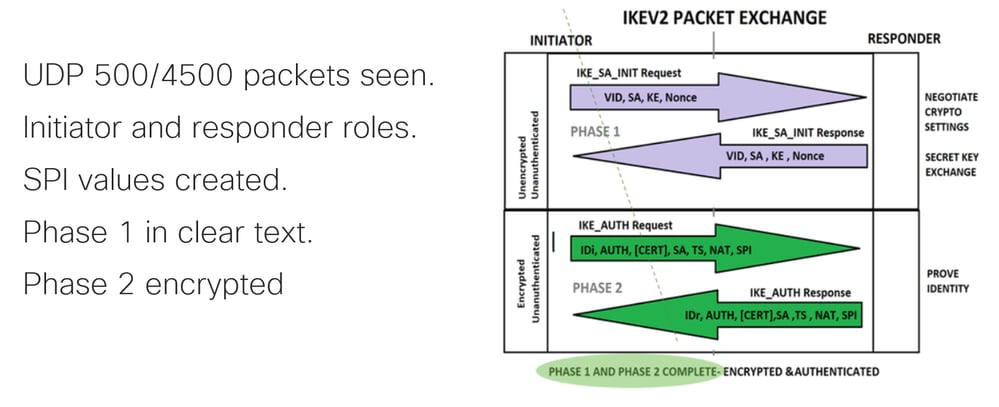
Showing the brief output of the capture from the router, the interaction between the peers is seen, sending UDP packets.
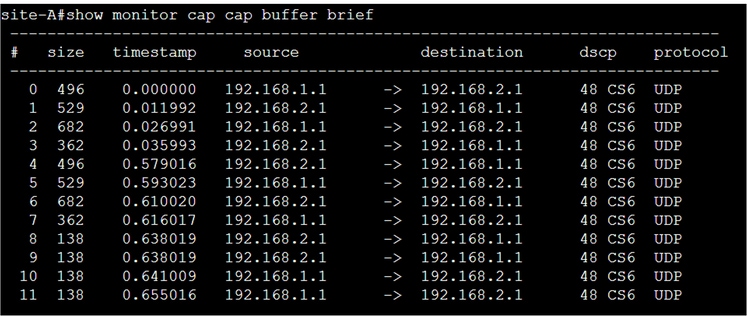
After extracting the dump and exporting the pcap file from the router, more information from the packets is visible using wireshark.
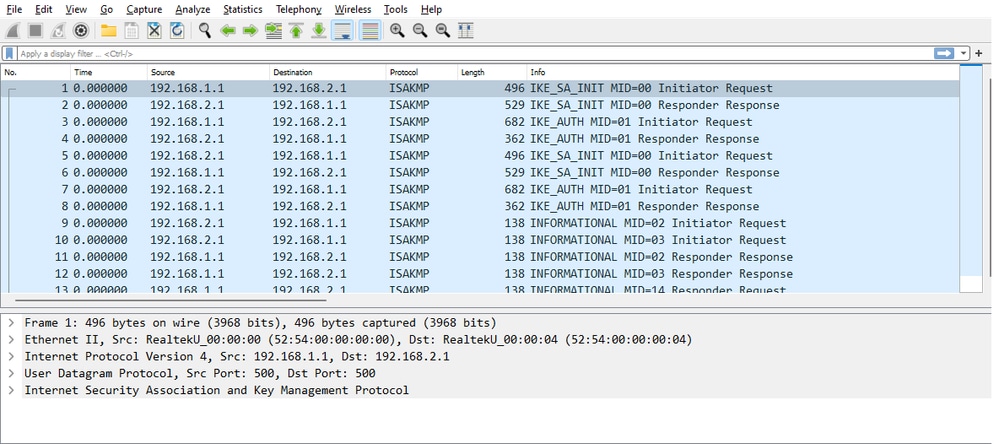
On the Internet Protocol section of the first IKE_SA_INIT Exchange packet sent, the source and destination addresses of the UDP packet are located. On the User Datagram Protocol section, the ports used and the Internet Security Association and Key Management Protocol section the version of the protocol, the type of message being exchanged, and the role of the device, as well as SPI created are seen. When collecting IKEv2 debugs, the same information is presented within the debug logs.
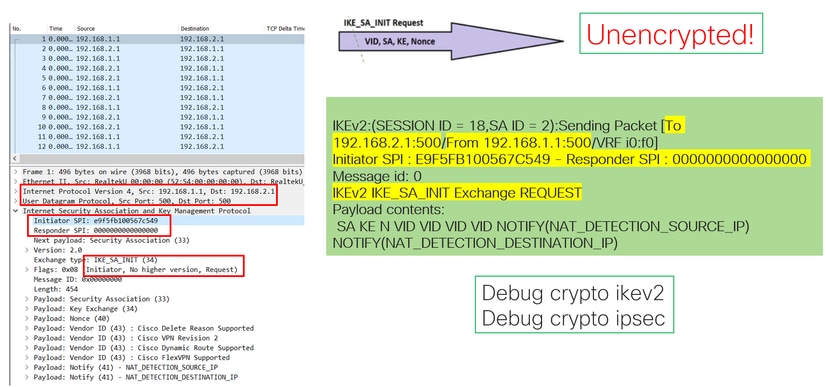
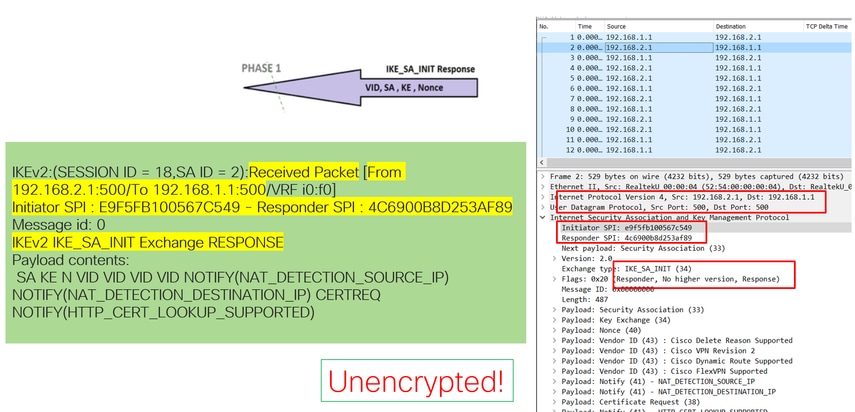
When the IKE_AUTH Exchange negotiation takes place, the payload is encrypted but, some information about the negotiation is visible, such as the SPI previously created, and the type of transaction being made.
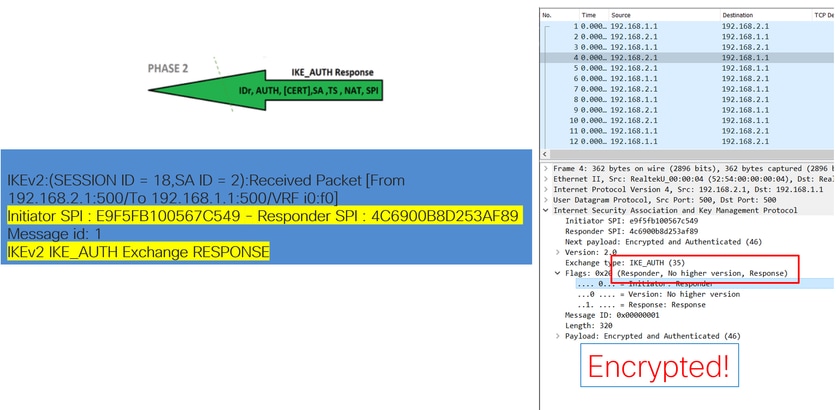
Once the last IKE_AUTH Exchange packet is received, the tunnel negotiation is completed.
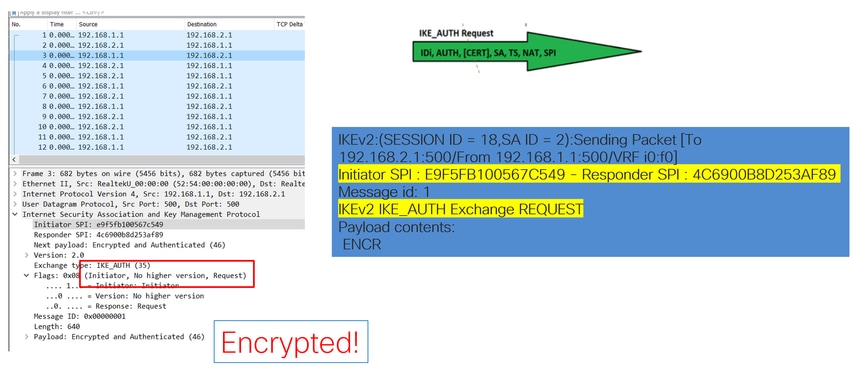
Transaction When NAT is in Between

Nat-transversal is another feature that can be seen when the tunnel negotiation takes place. If an intermediate device is natting one or both addresses used for the tunnel, the devices change the UDP port from 500 to 4500 when phase 2 (IKE_AUTH Exchange) is negotiated.
Capture taken on Side-A:
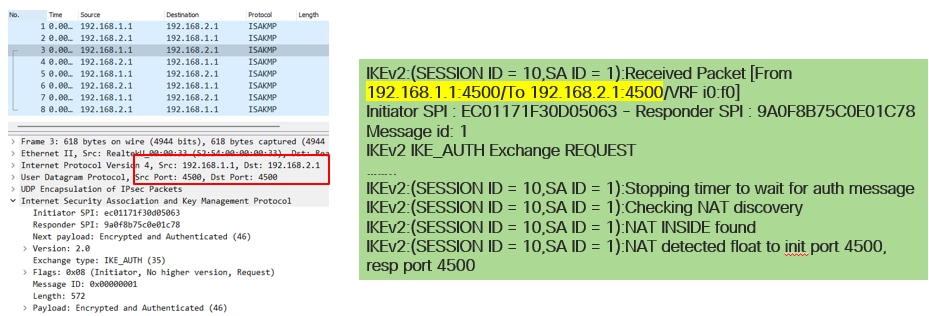
Capture taken on Side-B:
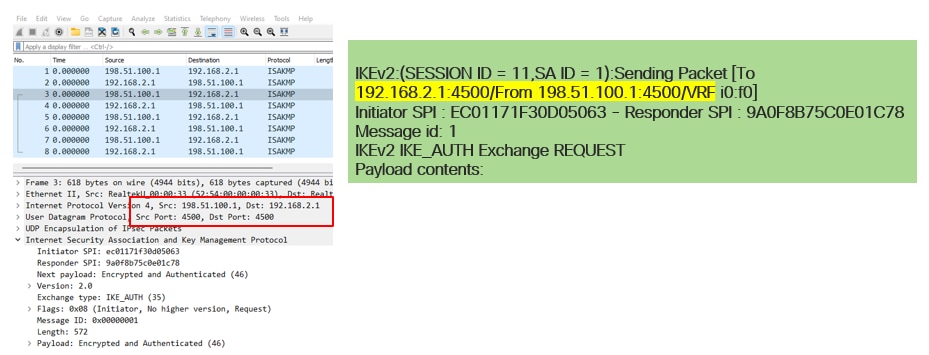
Common Control-Plane Issues
There could be local or external factors that affect the tunnel negotiation and can be identified with captures as well. The next scenarios are the most common.
Configuration Mismatch
This scenario can resolved by looking at each device phase 1 and phase 2 configuration. However, there could be scenarios in which there is no access to the remote end. Captures help out by identifying which device sends a NO_PROPOSAL_CHOSEN within the packets either on phase 1 or 2. That response indicates something can be wrong with the configuration and which phase needs to be adjusted.
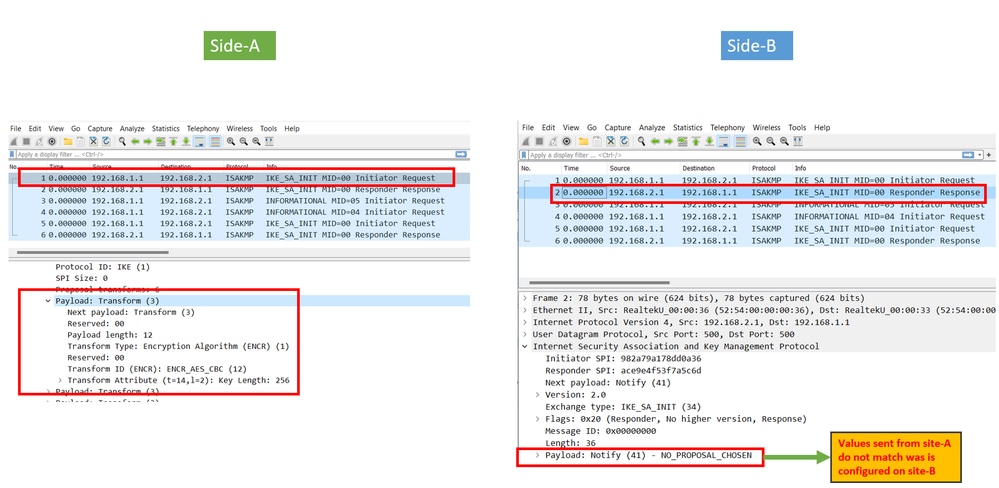
Retransmissions
An IPSec tunnel negotiation can fail due to the negotiation packets being dropped along the path between the end devices. The packets dropped can be phase 1 or phase 2 packets. When this is the case, the device that expects a response packet retransmits the last packet, and if there is no response after 5 attempts, the tunnel is concluded and restarted from the beginning.
Captures on each side of the tunnel help by identifying what could possibly block the traffic and in which direction it is affected.
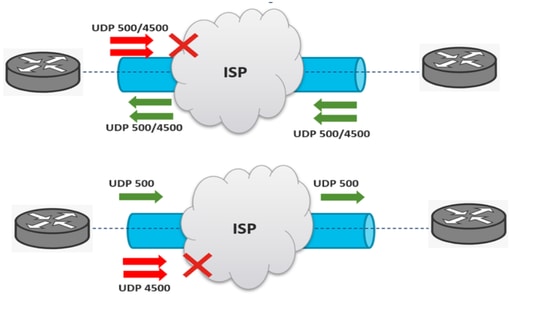
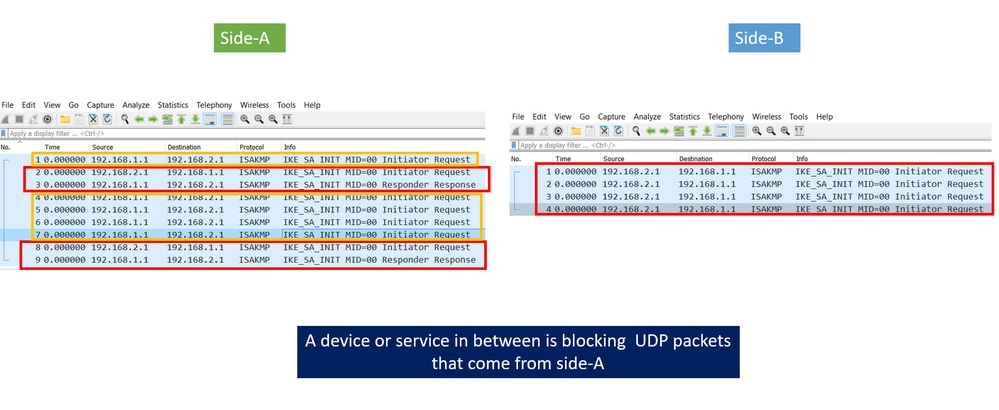


















 Feedback
Feedback